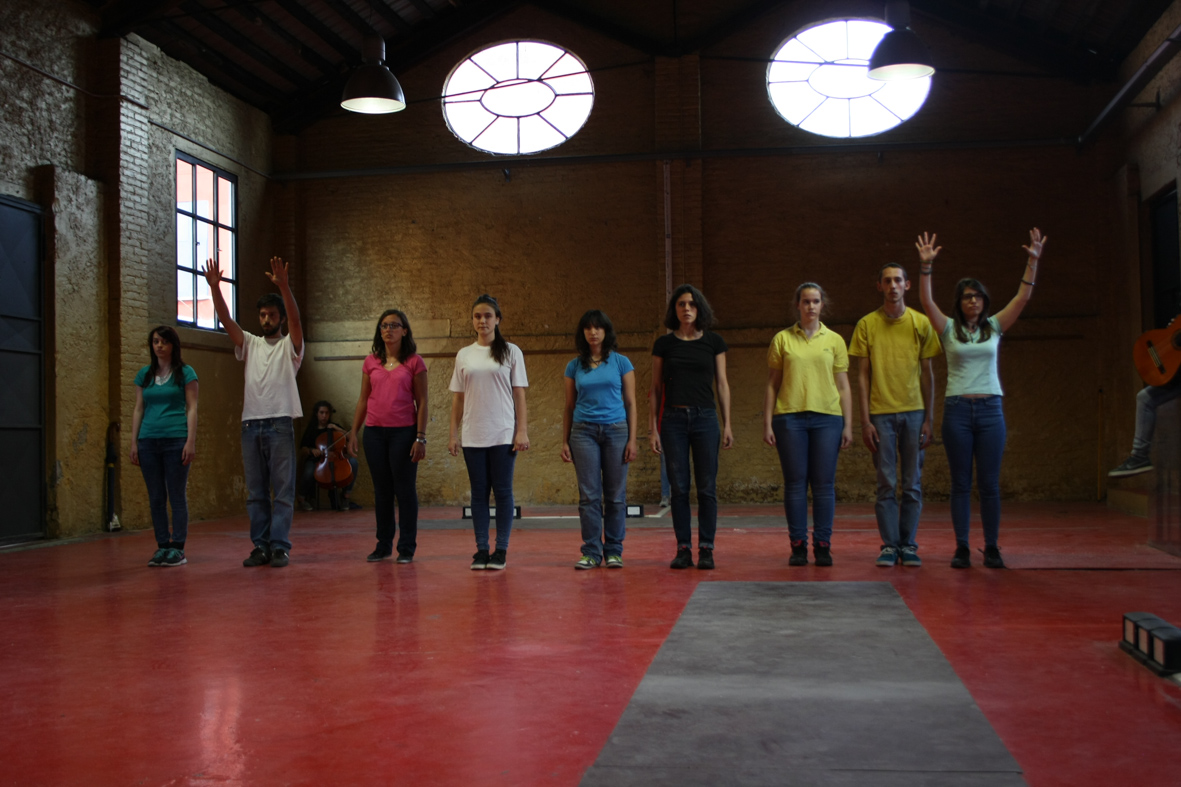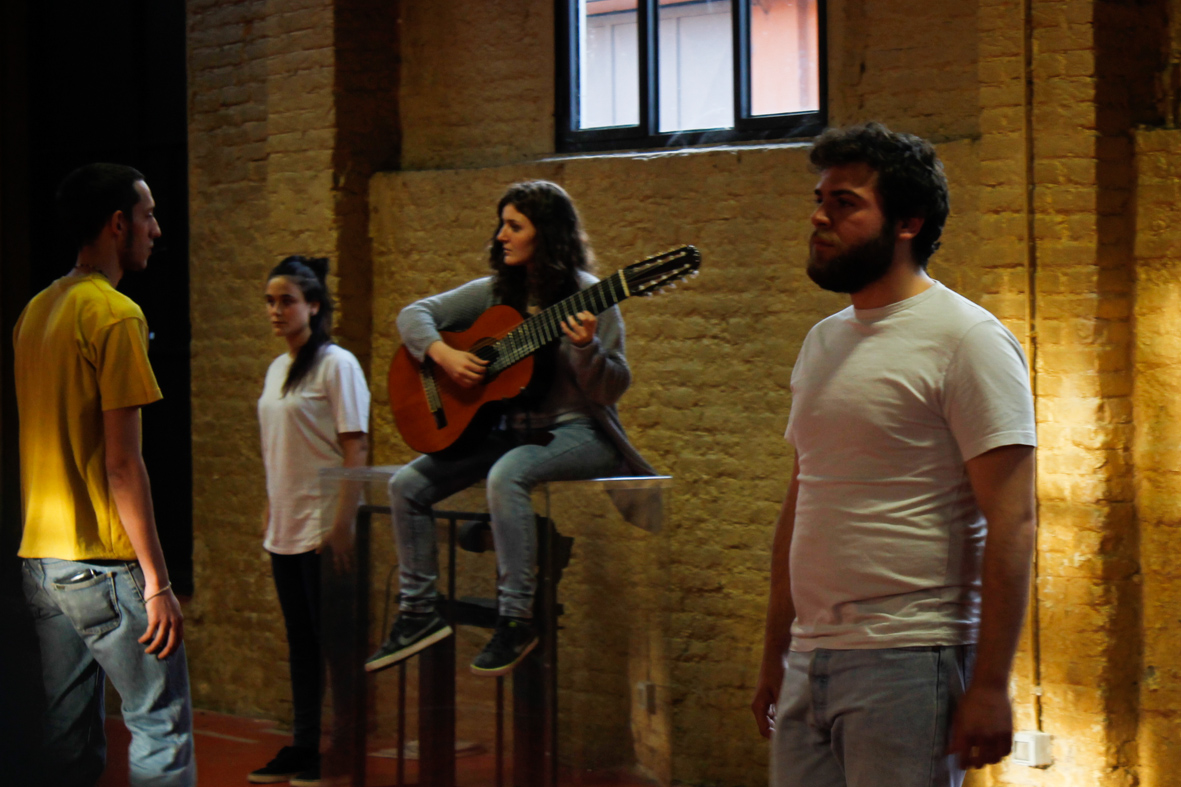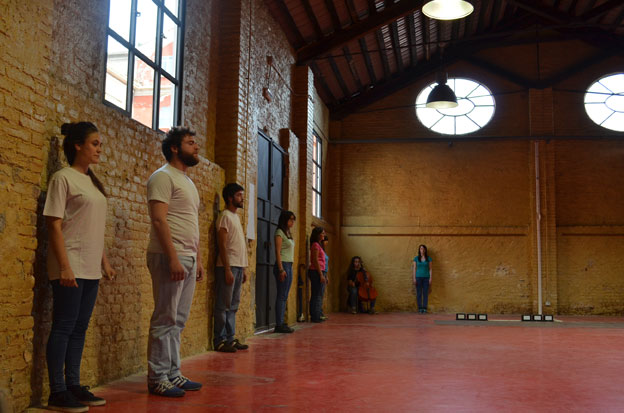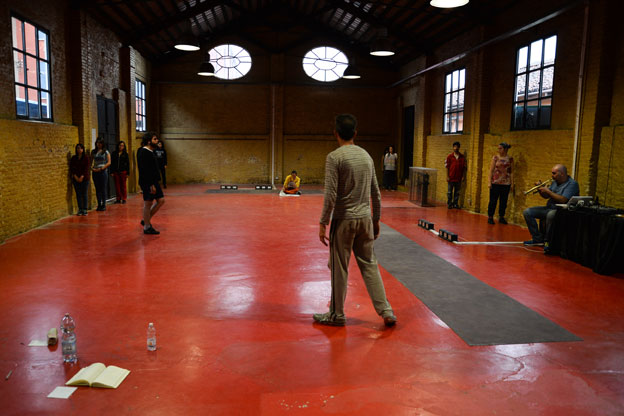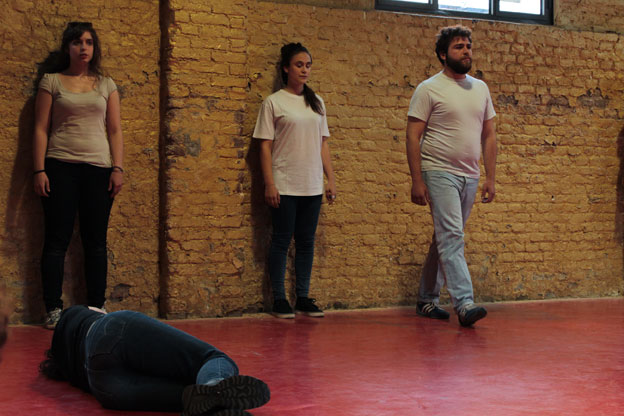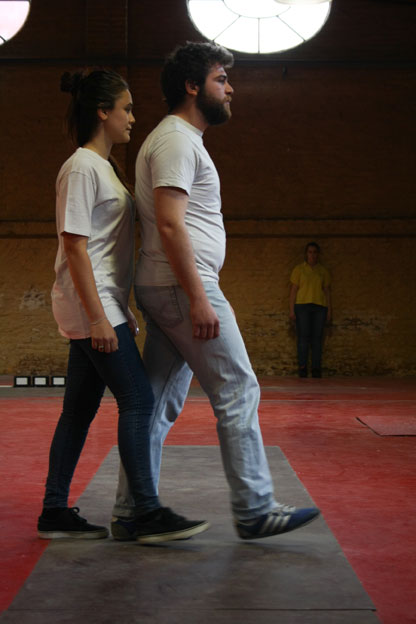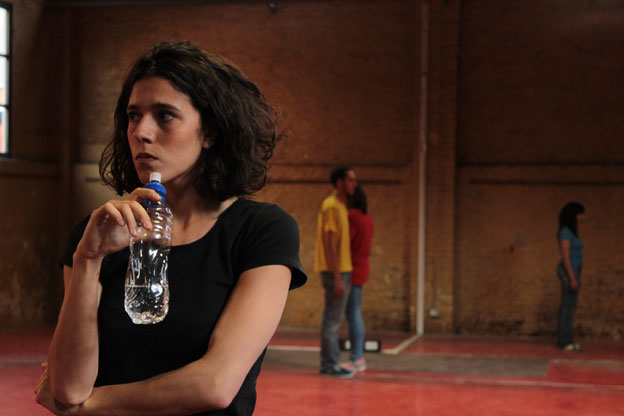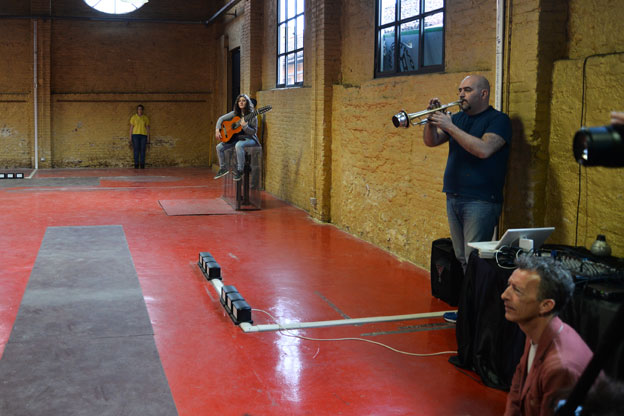Workshop 2015
One walking, others joining
workshop ideato e diretto da Peader Kirk
18 - 21 maggio 2015, Ex-Manifattura Tabacchi
Giovani artisti torinesi, in collaborazione con il regista PK esplorano la performance attraverso la composizione e la lentezza: pensate allo sciabordio delle onde o al movimento in cielo delle nubi.
Performer
Cecilia Ceccherini, Elisa Franceschetti, Giada Lusano Giorgio Judica, Anna Molinatti, Ester Pairona, Edo Piermattei, Carlotta Ruffa, Veronica Scalera, Mattia Trevisan
One walking, others joining
A workshop exploration for Ars Captiva
Returning to Turin to work again with the emerging artists of Ars Captiva in a year when The Eurozone was in crisis and at a time when artists across Europe had been self instituting collective spaces such as the Teatro Valle in Italy or Embros in Greece, the impulse for this year’s workshop grew from the necessity to investigate how we work together and how we work with the least means. As Bourriaud has observed ‘The artistic question is no longer: “what can we make that is new? ”but “how can we make do with what we have?”’ Hardt and Negri’s conception of the “commons” as those resources both natural and cultural that we hold in common – air, language, the earth – and its challenge to the commodification of lived experience as well as its rupture of contemporary models of political participation fed the desire for the work to find a practical co-working method allowing for each artist to contribute their individuality to a collective work. In searching for this basis there was an active rejection of the concept of an open space as an equal playing field since such models of equality in fact ignore the uniqueness of the individual and by proposing a one size fits all solution in fact promote inequality. The work rejected a chimeral consensus in favour a dialectic embracing both unity and disunity.
To be “poor” in Grotowski’s sense of using only the means of performance that are unique to the live act – the body of the performer in space excessively expending her/his energy for an audience in order to create an encounter with them– is also to be ecologically aware; to consider ‘how we can do make do with what we have.’ We worked without any theatrical lighting or set in a bare industrial space letting the falling light of evening as we played, shape the visual experience of the work. We decided to begin with the simplest performative action: one person walking in the space. And to then ask how we might find a commons, a shared space of making through other simple actions moving into place alongside this first action – standing, sitting, breathing audibly, walking at twice the pace – with the aim that no action should dominate or erase the others; that the actions and the people carrying out the actions should seek a live negotiation of co-existence.
Sitting alongside the Turin Jazz festival as Ars Captiva has done for the last years has led to a concern with aurality entering the work we have done. The previous workshop led to the creation of the sound piece ‘I was there...’ which reprocessed older people’s memories of performances which had “changed” them through the embodied presence of young people who were at the age the older people had been when they experienced those life changing performances. The accounts of these experiences were fed to the young performers through in-ear audio feeds. They then spoke the words thgey percievd, reintroducing surface noise to the digital artefact via their constructive mis-hearings and mis-speakings. Such an approach to performance draws on Serres concept of “Noise” as the base from which meaning arises rather than that which interferes with the signal. In proposing the form of ‘One walking and others joining” we sought to further embrace aurality. Ross Brown has written of the paradox of sounds performance. While there is an originating cause of a sound –the bell being hit – that cause is not the sound. There are not two separate events/things – the sound and its resonance in a space but rather the sound and spatial resonance are one and the same thing. Sound is spatial and therefore relational, sound wants to be in common (in Hardt and Negri’s sense). Paralleling sound’s paradoxicality we sought through slowness and extended duration to allow each simple performative action, it’s spatial placing and it’s compositional relationship to the other actions in play became a phenomenal whole for the audience.
This concern with aurality and a desire to investigate how spatial impulses from physical performers might trigger tonal impulse from musical performers and vice versa, led to the invitation to a group of young jazz musicians facilitated by Giampiero Lo Bello to work alongside the young performance artists. The desire to cross the supposed dividing lines of artistic practices was again informed by the principle of a dialectic of unity/disunity and a search for a commons.
So we decided to be slow. To use the simplest means. To work as the sun set. To bring together musicians and performance artists. To build a commons across art forms and between individuals. To build a commons with and audience. To make a performance that did not demand you watch it but rather invited you to be present with it. To work for one hour. To make a performance that was like waves rolling onto a shore or the shadows of clouds passing over the land. We decided to begin with one person walking and then to invite others to join, moving, sounding; making together. We sought neither to improvise (to do anything) nor to follow a score (to do this one particular thing) but to create a live encounter, a commons, as a social and political act. We sought to do something.
As always I am deeply grateful to Ars Captiva for inviting me to work with the young artists of Turin who are truly inspiring and to the people of Turin for embracing the work we make together.
Peader Kirk
London Oct 2015
Works Cited
Brown, R. (2011) Theatre Noise. In Kendrick, L & Roesner, D. Theatre noise: the sound of performance. Newcastle upon Tyne, Cambridge Scholars Press.
Bourriaud, N. (2005) Post Production. Berlin, Sternberg Press.
Grotowski, J. (1968) Towards a poor theatre. London, Methuen.
Hardt, M & Negri, A. (2011) Commonwealth. Cambridge, Harvard University Press.
Serres, M. (1995) Genesis. Ann Arbour, University of Michigan Press

